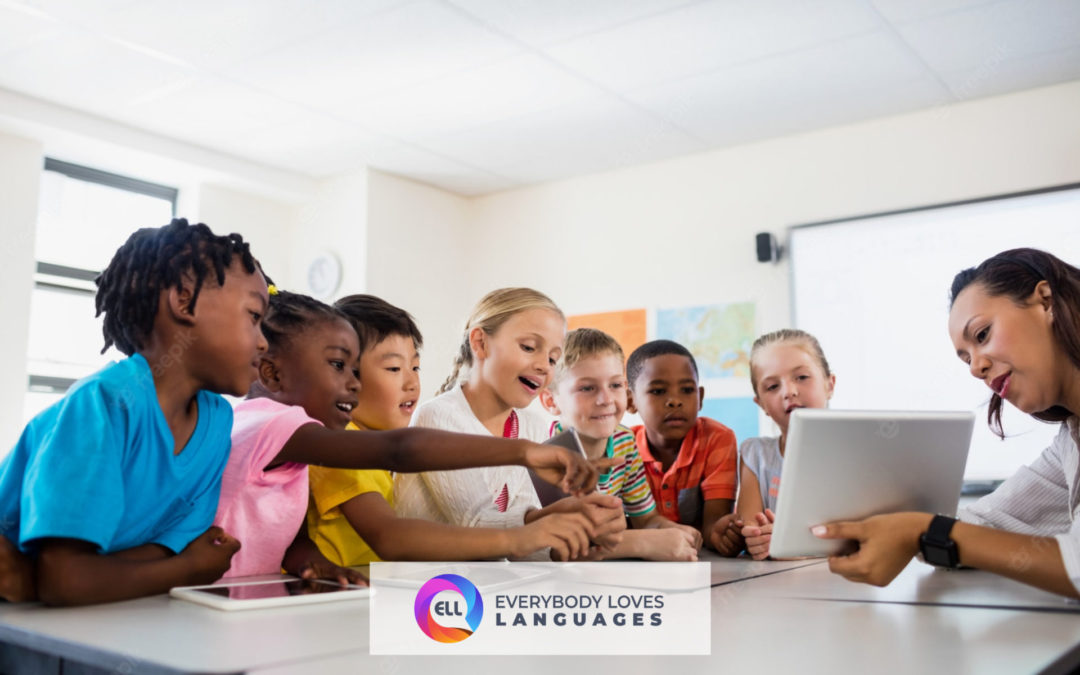By: Cindy Valdelamar
A child’s greatest achievements are possible in play, achievements that tomorrow will become his basic level of real action.
-Lev Vygotsky
High-pitched voices, energetic walking around the classroom, dancing, laughter, and intrinsic willingness to play. Teaching a foreign language to young learners widely differs from teaching young adults or learners at any other stage of life. It can be one of the world’s most adventurous, challenging, yet rewarding experiences.
Why teaching young learners is different?
Young learners are extremely inhibited and curious. They learn from example, association, and play (which they love). Young learners learn as they imitate, create, engage in hands-on activities, and make mistakes. They are not afraid of trying and doing; they are open, active, and extremely creative.
Hence, learning about the brain’s stage of development during the early years is key to designing strategies for language learning in young learners. This construct has been researched and documented (Piaget, 1952; Guerrero, 2007, Walsh and Hodge, 2016). In sum, learning during the first stages of life needs to be:
- Fun rather than repetitive: the presentation of the concepts needs to be attractive and coherent. Connected from easier to complex, scaffolding knowledge.
- Hands-on rather than teacher-centered: the more learners are asked to participate, the richer the language experience becomes.
- Foster socioemotional skills: young learners start to self-regulate, express what they like, dislike, and build a perspective of themselves and the world around them. Language learning can be an opportunity to address positive and negative emotions and how young learners make sense of them.
- An experience: during the early stages of life, the brain learns to feel, laugh, and experience. Teaching the brain involves first teaching our five senses.
- Inclusive: Every learner has a different style when it comes to learning. Allow them to move at their own pace. Addressing different learning styles in a pressure-free environment will make language learning fruitful.
Engaging tasks: Happy class!
At this point, any learning involves moving beyond the curriculum’s scope. Teachers help learners self-regulate their behavior, develop socioemotional skills, deal with their short attention spans, and learn the primary skills to move from concrete ways of thinking to abstract thinking.
The strategies we use for teaching need to be active enough to keep all learners engaged and motivated. At the same time, they must address their stage of development. Nothing is more daunting than a class full of unmotivated learners! Have you been there? Next time you approach a young learners’ class, consider that there is something present in every young learner:
- A magic perspective of the world: learners bring their imagination into the real world. It’s no surprise seeing them playing and acting out as their favorite characters from their loved T.V. show or movies. You might be surprised about the number of conversations teachers have daily with their students about the last movie they saw or what their favorite character is going through. Using authentic materials such as movies in class might take language learning to the next level.
- Love for catchy songs: music is vital to infusing enthusiasm in a language class. What we learn through music is often more easily remembered than what we learn from direct instruction.
- Dancing without shame: don’t be afraid to encourage young learners to stand up, move and dance. Language learning must be active and address all skills.
- Unbiased perspective of others: take advantage of this stage to foster collaboration and acceptance in the class; the earlier our students learn about empathy, the better.
In sum, the earlier the years, the less prior knowledge our learners have. The classroom becomes the place where students explore, experience things for the first time, talk to others, make mistakes, and often, let go of frustration to grow. Make language learning engaging, consider your learners’ needs, and have fun!
References
Guerrero, C. (2007). Applications of Vygostkyan concept of mediation in SLA. Colombian applied linguistics journal, Vol, 9, 213-228.
Piaget, J., & Cook, M. (1952). The origins of intelligence in children (Vol. 8, No. 5, pp. 18-1952). New York: International Universities Press.
Vygotsky, L (1962) Thought and language. New York: The MIT Press, Massachusetts Institute of Technology and John Wiley & Sons, Inc.
Walsh, R. L., & Hodge, K. A. (2016). Are we asking the right questions? An analysis of research on the effect of teachers’ questioning on children’s language during shared book reading with young children. Journal of Early Childhood Literacy, Vol, 18.




Recent Comments